In football, nothing surpasses the prestige of the number 10. The world’s most famous players, such as Pelé, Diego Maradona, Zinedine Zidane and Lionel Messi, all have worn the number 10 shirt. Every child’s dream is to become a number 10, being the focal point of the attacking team by creating and scoring goals. Many have viewed the number 10 position as the most influential on the pitch for many years. Now, as we enter a new phase of football that is focused on rapid attacks and structured midfielders, the number 10 is becoming less influential than ever before.
What we are seeing is the death of the number 10 role as we know it. In the past few seasons, the emergence of the 8/10 hybrid has overtaken the value of a creative number 10. This tactical analysis and tactical theory piece will examine why the death of the number 10 is already upon us in modern-day football tactics.
The number 10
In order to understand why the traditional number 10 is becoming less impactful in modern football, it is important to understand the commonly known characteristics of it. A number 10 is going to be one of the most creative players on the pitch who will have exceptional vision, technical ability, passing ability and a tendency to transform a team with their performances. Number 10s find pockets of space behind the strikers but ahead of the more defensive midfielders. This creates major problems for opposing teams as it becomes incredibly difficult to mark the attacking midfielder. For this reason, clubs who face a dangerous number 10 will either try to man-mark them or could even change their formation to nullify the attacking threat of the key player.
The team below shows how a manager may set up to utilise their number 10, which will be a 4-2-3-1 formation with the opposing team playing in a 4-4-2. Please note that another common formation while playing with a number 10 is the 4-1-2-1-2 formation (yet is less commonly used in today’s tactics).
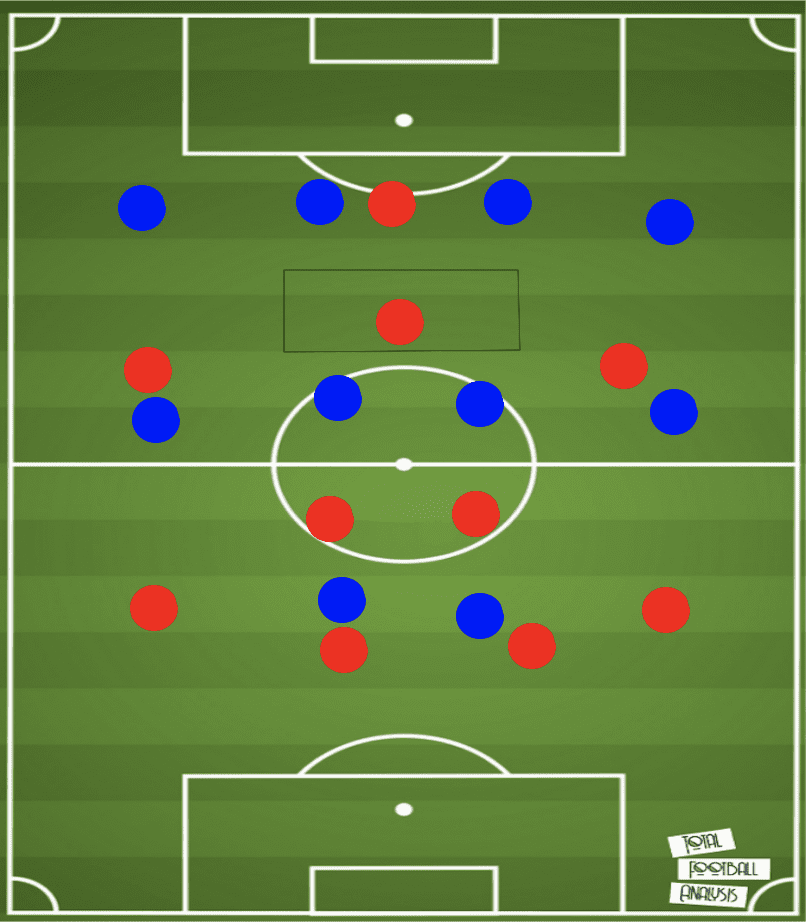
The number 10 is highlighted above and it is clear to see how this position can be so effective when combining the advantageous position on the pitch with the skills he or she possesses. When playing against a 4-4-2, the attacking midfielder can find space in between the two lines of four. This will allow them to have time to affect the match with their creativity. Similarly, if the defending team (blue) decided to change their shape to two defensive midfielders to eliminate the space for the number 10, the two other deeper midfielders on the attacking team (red) would become available.
This brief overview shows how a number ten can be important to a team. The tactical theory report does not aim to say this position and type of player is not relevant in today’s game. However, there has been a trend to suggest that this is the way tactics are heading. The main reasons will be discussed during this tactical theory piece.
Change of tactics
The first reason as to why we are beginning to see the change in modern tactics to eliminate the need for a number 10 is the change in formations the top teams in the world are employing. The example in the previous section of this tactical theory piece showed the two different formation managers who use a number 10: the 4-2-3-1 and the 4-1-2-1-2. In modern football, these formations are less common compared to the 4-3-3. While the 4-3-3 is not a new formation, the way managers have shaped the 4-3-3 has evolved.
It is common for leagues to experience trends in formations because football is a constantly changing landscape. In the early 2000s, the 4-4-2 was a staple of the world’s best teams as managers like Sir Alex Ferguson (former Manchester United manager) and Arsene Wenger (former Arsenal manager) used that tactical setup. These teams were incredible and even invincible as Arsenal won the 2004-2005 Premier League campaign without tasting defeat. Despite the constant success, every league and team’s formations and tactical ideas change. This time around, the number 10 is at the expense of managers who are utilising the 4-3-3 formation.
A great case study of this change in tactics are Liverpool. Since Jürgen Klopp’s arrival, Liverpool transformed from a historic powerhouse to a modern-day juggernaut. His success thus far at the Reds can be attributed to many different factors such as strong recruitment and trust in his system. Obviously, without the players to fit the system, the 4-3-3 tactics Klopp employed would not have worked.
With Roberto Firmino, Sadio Mané and Mohammed Salah in the attack, Klopp’s tactics focused on these players to produce and be creative. Despite being wingers, Salah and Mané played as if they were forwards, and their goal output proved that to be true. In the 2019/20 season, Mané scored 18 times while Salah scored 19 times. Firmino, who is designated as the striker on the team sheet, scored nine times respectively. These numbers show where the main source of attacking production comes for Liverpool.
The midfielders for Liverpool did not produce in the same light. While it is expected for midfielders to score less than attacking players, Liverpool’s midfield had poor goal production. That statement could be viewed negatively, but the reason is that it was not their job given Klopp’s tactics in the 4-3-3 formation. The Liverpool midfield attacking production can be seen in the table below.
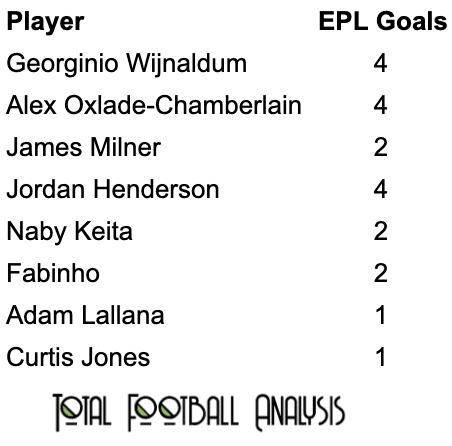
Despite being a high scoring team, it is clear to see that the Reds do not get attacking production from their midfielders; they have different roles. Even when creating, Liverpool created through the likes of Andrew Robertson and Trent Alexander-Arnold who had 12 and 13 assists this year in the Premier League respectively. Since both of these players are outside-backs, it shows Klopp’s commitment to the width of his team and where the creativity originates from. Because the outside-backs consistently make runs forward and the front three create a lot of their own chances by driving into the box, Liverpool’s midfield needs to remain balanced. Their main job does not always mean to join the attack and create, which allows the front three to take risks while in possession.
The analysis below demonstrates how Liverpool use their balanced midfield to allow for other players to be the creative force. They do not need a number 10 playmaker because of these tactics and are set up in a disciplined team structure. This sequence starts when Robertson plays a pass into Firmino’s feet who immediately lays the ball off to Mané.
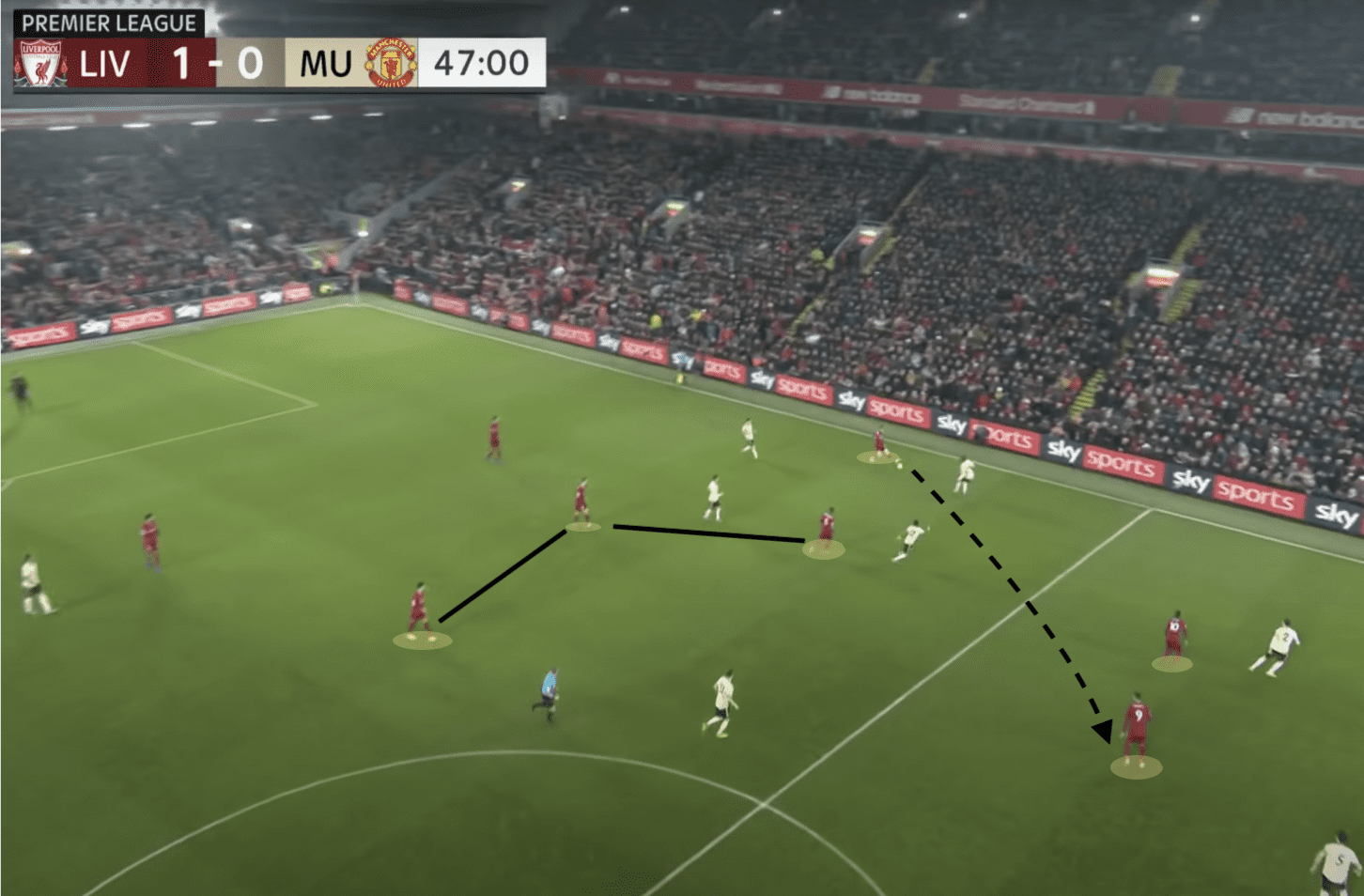
At this point, Mané has the option to pass to Adam Lallana in the midfield who could try and create by switching the direction of play.
However, he decides to turn and run with pace because without even looking he knows that Robertson will be making the forward run to give them the advantage.
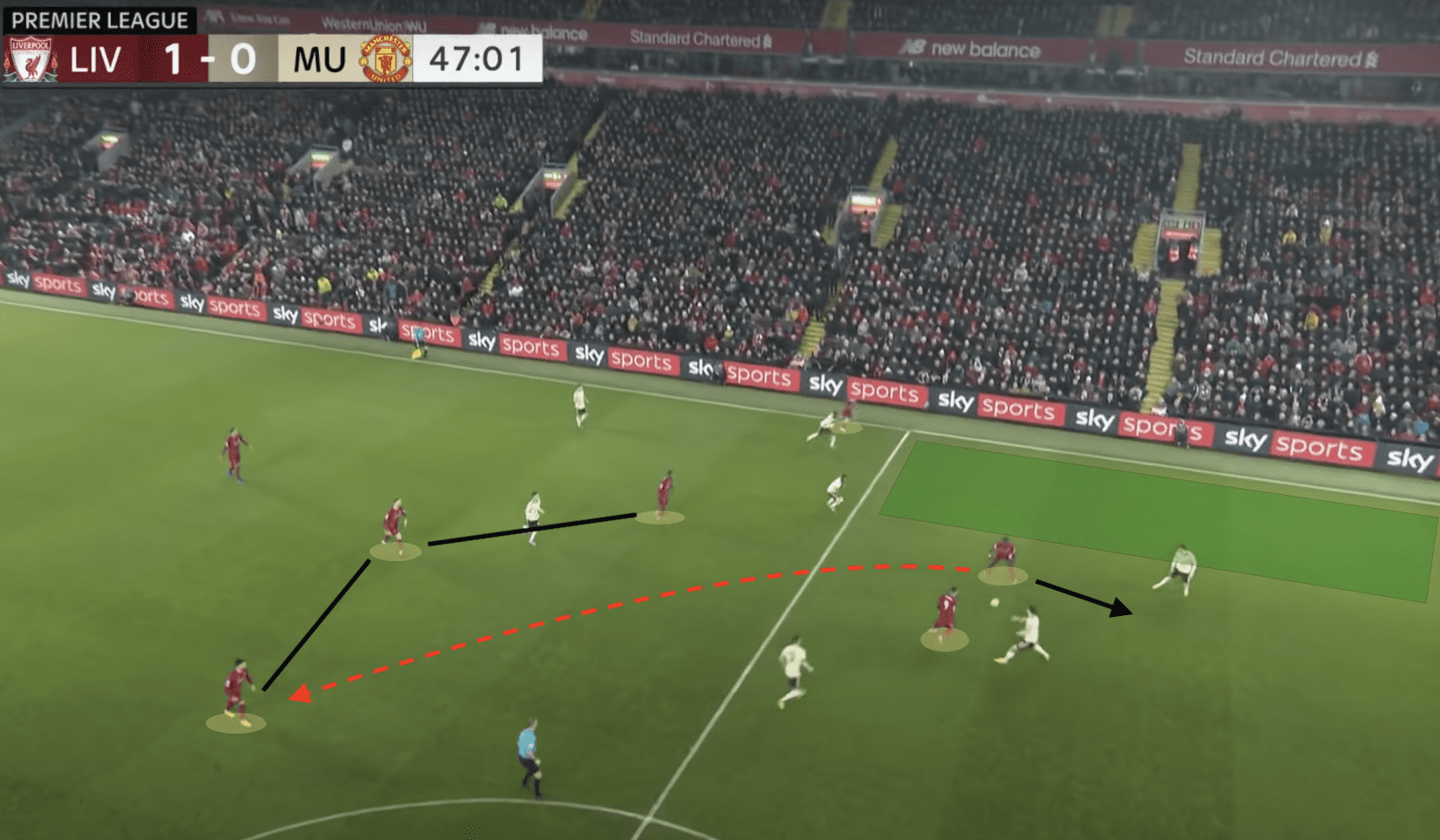
As the space opens up, Robertson finds himself in a fantastic crossing position. Notice how in the picture you can see Salah, Firmino, Mané, and Roberston. All of these players are considered a part of the attack, but you do not see the midfield three from the first imagine sprinting forward.
This situation proves how three midfielders who are not exactly the best creative force can still add so much creative potential. In other words, by Liverpool’s midfield creating less, they are allowing for other spaces to open up.
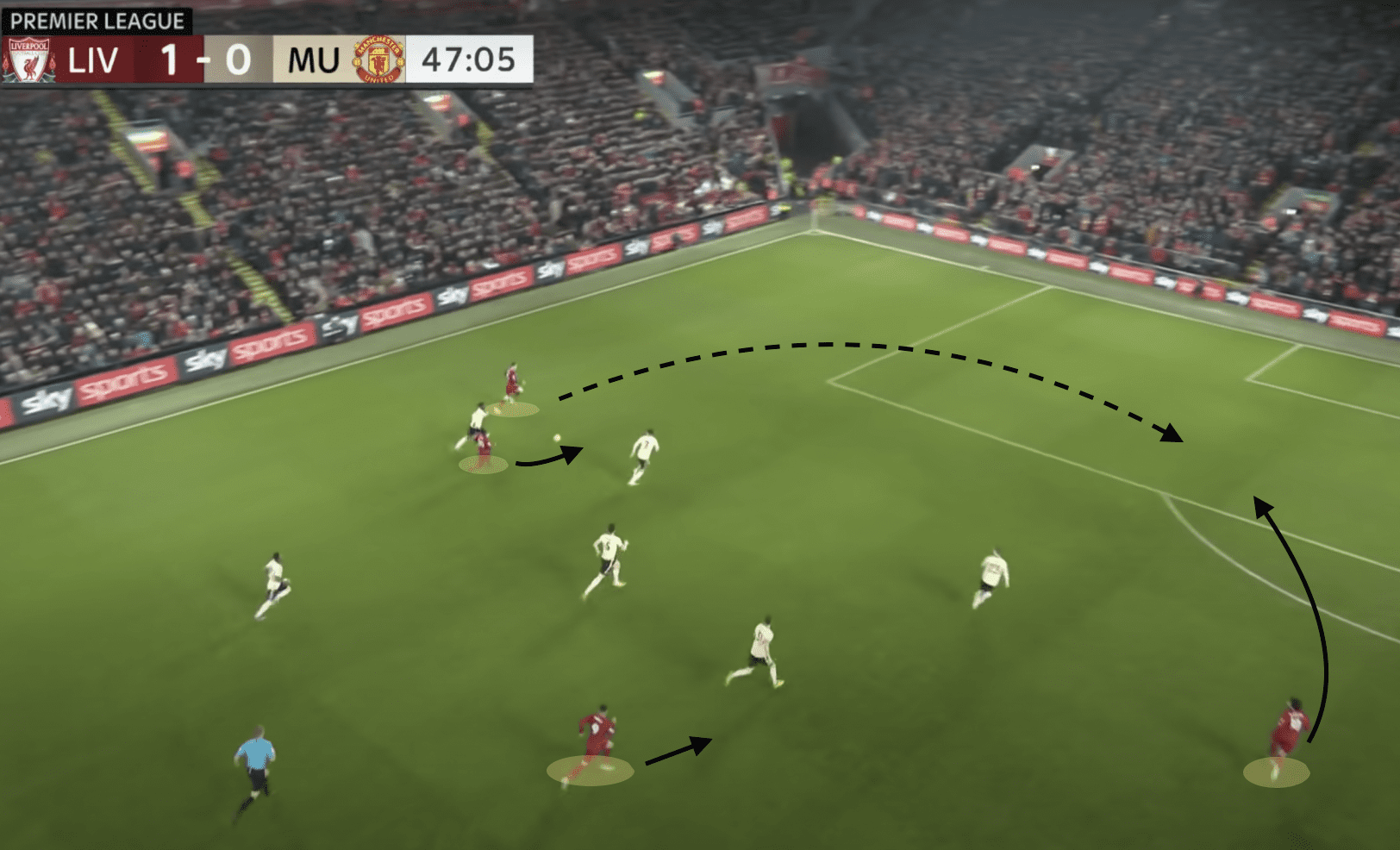
This brief overview of where the production in a team like Liverpool comes from highlights the beginning of why the number 10 is becoming less important. The main areas of creativity and goal scoring production come from the three forwards and the width of the outside-backs. This leaves no space for a number 10 type player who would be considered a luxury in these tactics. Consider Philippe Coutinho for example. Coutinho considers himself as a true number 10 as he has stated in interviews when asked about his favourite position. His claim is true as he has all of the characteristics of a true number 10 who is incredibly gifted and can score and create goals. However, when Klopp took over at Liverpool, he refused to fit a number 10 into his tactics. This relegated the Brazilian to a position on the wing in the Liverpool starting 11 for most matches.
While not every team who employs a 4-3-3 will use these specific tactics, the most successful teams in the world are using them. Teams such as Liverpool, Paris Saint Germain, Real Madrid and Manchester City are all incredibly accomplished clubs who utilise the 4-3-3 with the tactical instructions outlined above. Despite having the best talent in the world, their midfielders would not be considered as true number 10s, something which shows a true evolution of midfielders in the modern game.
The emergence of the 8/10 hybrid
As one position phases out, it is common in football for a new position to emerge. In today’s tactics, we are witnessing the decline of the number 10 and the emergence of the 8/10 hybrid. The reason for this is because managers are looking for players that are defensively capable, mostly in regards to positional discipline while also creating from deeper, allowing the front three to attack quickly with more space. These attributes are creating a new mould of elite midfielders. Just like how being a world-renown number 10 is incredibly difficult to become, the same could be said about the 8/10 hybrid.
There are many players that could be analysed while explaining the emergence of the 8/10 hybrid, but in order to stay consistent with the Premier League, this section will discuss how Kevin De Bruyne has become one of the best midfielders in the world while occupying the 8/10 hybrid position for Manchester City. Again, this is a specific example but the concepts discussed can be applied across many other players.
De Bruyne registered 20 assists and 13 goals in the 2019/20 Premier League season in 35 appearances for the blue side of Manchester. This equals an astonishing 33 goal involvements for the Belgian, almost leading to one goal involvement per match. These statistics are a testament to how De Bruyne has evolved while being the lead playmaker for Pep Guardiola, Manchester City’s manager. Guardiola plays a 4-3-3 and De Buryne is typically playing the role as the right central-midfielder. Pep gives De Bruyne more license to go forward than the other midfielders, hence why the name became the 8/10 hybrid. The Belgian is not playing the number 10 role positionally, but he does fill the traditional duties of the number 10.
The heat map below shows how De Bruyne is positionally disciplined while still finding opportunities to be involved in a goal per match. Notice the very intense red areas of this heat map. De Bruyne does not need to free roam to be effective because his qualities complement the position extremely well. He has strong positional awareness, makes progressive passes (ranked fourth in the Premier League), possesses an incredible passing range, and scores plenty of goals from outside the box (six goals). All of these attributes allow De Bruyne to help his teams defensive structure, which leads managers today to desire players of his mould rather than a number 10 who sacrifices positional structure.
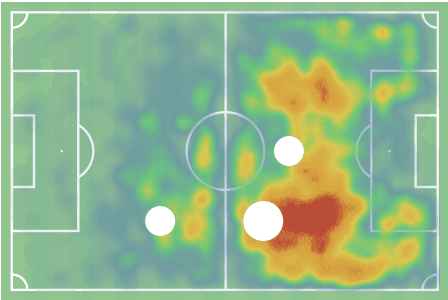
While his defensive positioning helps the team in terms of structure, De Bruyne also contributes defensively in terms of recoveries. Last season, he made 237 recoveries for his team. It is important to note that even though De Bruyne played almost twice as many matches than the year before, his recovery statistics are over three times greater, which demonstrates how effective the 8/10 hybrid role can be for a club.
Clearly, the Belgian international has no issues creating chances and assisting goals despite being more restricted positionally. Compared to players in his position, De Bruyne creates 3.22 shot assists per 90 minutes, a shot assist meaning a pass that results in a shot for the player receiving the ball. The closest challenger to this statistic is James Maddison who registers 2.14 shot assists per 90 minutes. Manchester City’s star creates over one shot assist more than the second-best in this category. Furthermore, De Bruyne is the leader again in through passes per 90 minutes with 3.67.
What is exceptional is how De Bruyne accomplished these numbers from a deeper position than a traditional number 10. The image below shows De Buynes assist and shot assists from the 2019/20 season. The start of the arrow represents where on the pitch he is passing from. When looking at the lines, many of his assists or shot assists originate from outside the final third. The location shows how De Bruyne is capable of creating from a deeper position on the pitch, which will allow more space for the wingers and strikers to play into when they receive the ball.
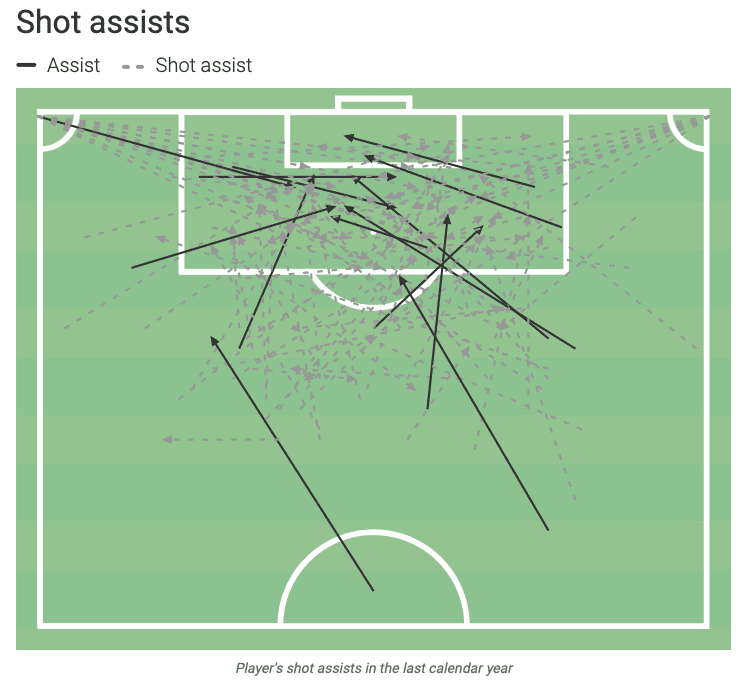
This highlights his brilliance but also shows how a player can perform in this position. Managers are realising they no longer need to sacrifice defensive structure for attacking production. This can be accomplished by having exceptional talent and giving them the tactical instructions of the 8/10 hybrid. However, a team may not always have a player of this calibre. In that situation, managers can focus more on the width of their team and their forwards’ ability to create.
Conclusion
At the beginning of this tactical theory piece, there were many questions that were raised: how can the decline of traditional number 10s be possible? Why have the managers not been able to work them into their plans?
This piece set out to deliver the answers to these questions. In short, the decline of the traditional number 10 is a combination of successful modern football tactics and the emergence of the 8/10 hybrid position. Managers will not work luxury number 10 players into their starting eleven anymore because they can not afford the player to have an off-day. If the number 10 does not perform, it has an extremely negative impact on the team’s creative ability and defensive structure if they are allowed to free roam.
Finally, this tactical theory piece does not aim to suggest number 10s are not valuable to a team. Each team must structure their side to fit the players at their disposal. What this piece does aim to suggest is the creative role in teams is definitely changing as we continue to view the current landscape of modern footballing tactics.






Comments